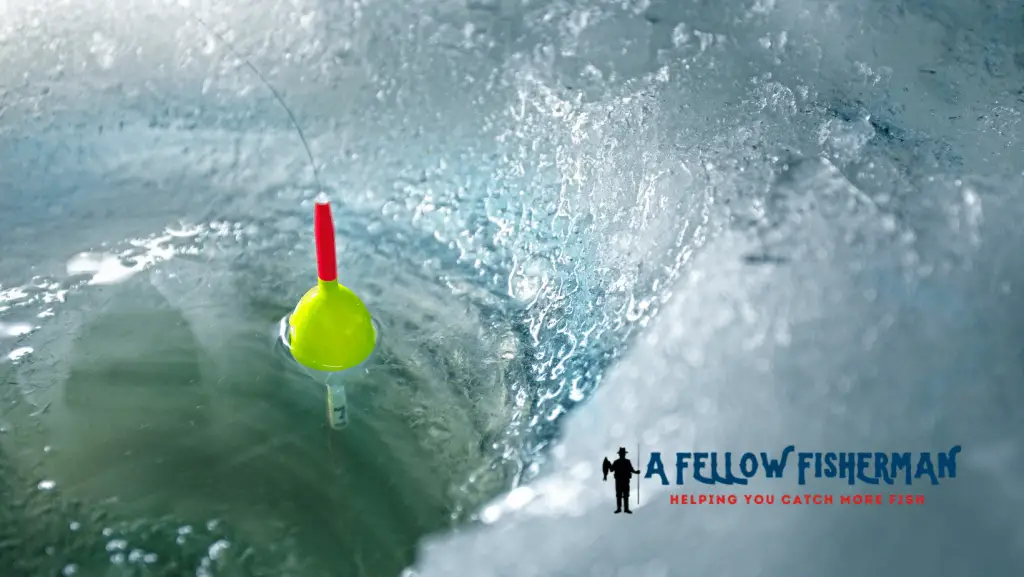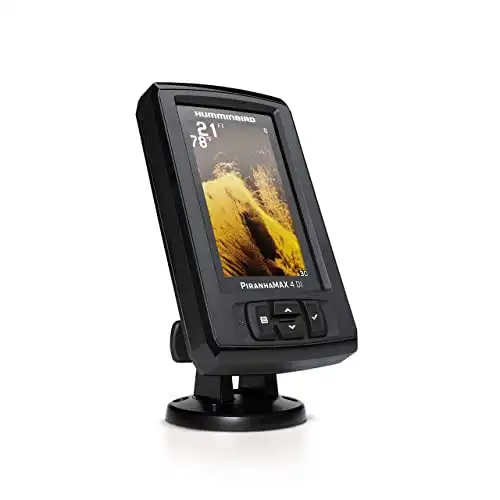
The Humminbird Pirahnamax 197c is no longer being sold, but you will certainly want to check out this Pirahnamax 4 DI Review. This review is still valid, but we have replaced the links to the product with links to the Pirahnamax 4 DI.
Avid anglers often work on a limited budget, that’s the magic of fishing. With just a rod and reel, some basic lures, maybe a supply of hand-harvested live bait, and experience, you can catch more fish than the guy next to you that looks like he just fell out of a sporting goods store sale catalog.
The Humminbird Piranhamax 197c down imaging fish finder built along those lines.
All Humminbird Piranhamax 197c reviews need to be conducted around the basic features of the device and compared to similar features offered on much more expensive models. You might be into all the extra functions, larger displays, and map-making features of fish finders costing five times or more as much, but at the end of the day, it’s catching fish that matters.
Specifications:
The Humminbird Piranhamax 197c works with dual beam sonar technology. It interfaces an XN 9 28 T transom mount on a transducer operating on 200 or 455 kHz frequencies.
The dual beam sonar sends a downward beam at 28 and 16 degrees, scanning everything underneath you as your boat, kayak, or raft crosses over.
The display is one of the smallest on the market with a 240×320 resolution on a 3.5 inch diagonal TFT color screen.
The interface is easy to use, and simple with just four buttons to scroll through and select options. It offers a maximum scan depth of 600 feet and draws just 220 milliamps from a 10.8 to 20 volt direct current variable power source.
The Limitations of the Humminbird Piranhamax 197c
The biggest drawback to his device is the small screen size and the lower resolution 240×320 pixel display. It offsets some of these limitations with a backlit screen, but this is a display that requires keen eyesight to read. If you’re an older user, odds are you’ll need your reading glasses to read the images displayed on the screen.
With every fish finder on the market, there are options that offset limitations. With the Humminbird Piranhamax 197c that option is the small footprint of the device and its variable power source.
You can use this small fish finder on any watercraft, even something as small as a float tube. It can be mounted on a trolling motor, the dash of your bass boat, or strapped down to the contour of your inflatable kayak or fishing tube. That means many versatile uses that aren’t offered with larger fish finders.
An added benefit is the portability of the fish finder. It is a favorite among ice fishermen since it is so small. It can be packed onto the luggage rack of your ATV or carried on your ice sled or bucket as you walk out to your favorite fishing spots.
A Great Device for the Price
Simple doesn’t mean limited when it comes to fish finders. The Humminbird Piranhamax 197c uses downward imaging with dual beam sonar that produces high-definition images within the limitations of the display screen.
The 28-degree beam finds fish and displays the targeting image when using the Fish ID+ feature. The 16-degree beam is for determining the contour of the lake or river below your watercraft.
With the two beams working together, you’ll get a multicolored image of the bottom of the water you’re traveling on as it moves up and down with the underwater structure of the lake, river, or reservoir.
The fish appear above the contour lines as individual images, and you can easily enable the fish alarm.
These are pretty basic fish finders that don’t offer specialized sonar readings, but for the price, it gets you on the water and brings in more fish while not taking up a lot of room.
The Fish ID+ feature is an adaptation for smaller display screens that takes the guesswork out of trying to decide if that dot on the screen is a fish or a chunk of floating vegetation.
You can program the Humminbird Piranhamax 197c with specifications on a fish target. When those specifications are met the Fish ID+ puts a fish icon on the screen. This works for small and large fish, but as you might imagine, the smaller the setting the more likely you’ll be to get false readings from objects other than fish floating in the water underneath you.
A nice feature is the fish alarm. You can cruise along on a perfect summer afternoon without worrying about watching the screen, when a fish appears, an alarm will sound and you can then check the display.
There is a depth alarm as well. You don’t need a fish finder with a maximum depth of 600 feet to tell you if you’re about to run aground, but knowing the depth of the water can be valuable information when fishing for catfish, ling, or rock bass.
A final basic, but essential, feature is the temperature sensor on the transducer that allows you to follow temperature bands in the water.
Lakes and reservoirs can vary greatly in temperature over various depths from spring to late autumn.
Trout are especially sensitive to water temperature. Finding a band of cold water around 50 degrees in late July offers an extra chance to pull in rainbows, browns, or lake trout.
The same is true of largemouth bass that thrives in warmer water from 70 to 80 degrees. Too hot and the bass move down, too cold, and they’ve moved up. Finding that temperature layer where they’re likely to increase your angling odds.
On the Rocks, Ice Fishing Enhanced

Using a fish finder on the ice is a well-kept secret held by many northern anglers during the long winter months.
The Humminbird Piranhamax 197c, weighing just four pounds is a nice addition to any ice fishing adventure.
You won’t use the device the same way you do on open water, but it is just as effective. The dual beam sonar frequencies can punch through the ice, since the technology doesn’t really care if the water is liquid or solid.
Many ice fishermen just lay out the fish finder on the ice after brushing away any extra snow or debris and start taking readings. Others start on top of the ice, then drop the transducer into a hole in the ice to get the readings they’re familiar with when fishing on open water.
Either way, you’ll find fish below the frozen surface.
For eons, ice fishing was the biggest gamble in the angling world. You might have a favorite spot, but you never knew what was underneath. The arduous task of drilling and cleaning holes through the ice, then setting up tip-ups and baiting hooks on jigging rods, was sometimes a forlorn effort.
With the Humminbird Piranhamax 197c and its portability, you can find fish, then begin setting up your hole pattern, baiting your tip-ups, and determining the exact depth to set them.
Is the Humminbird Piranhamax 197c a Good Fish Finder?

The first consideration is cost, with this being an inexpensive unit. If you’re on a budget, or just looking for a small fish finder, this one will do the trick.
The second consideration is size. The Humminbird Piranhamax 197c down imaging fish finder fits nicely on kayaks, small flat-bottomed boats, bass boats, float tubes, and canoes. It’s also easy to carry across the ice.
The transducer cable that comes standard with these fish finders operates on the KISS principle, “keep it simple and short.” That makes it flexible enough for larger watercraft but works well on the ice and with small boats too.
Perhaps the greatest consideration is how easy this device is to use. A simple, intuitive interface, matched with up/down, and left/right buttons allows you to scroll through and select options without much effort. It’s easy to learn as well, not requiring late nights with a user manual just to learn how to operate.
An added benefit to the interface is that it is easy to use while wearing gloves, a great feature to have if you’re out in 20 below zero weather on a cold northern lake in mid-January.
This isn’t a high-end fish finder, but it is one that gets the job done at a very modest price, and it is worth considering.
For more guidance on choosing your next fish finder, check out these pages below:


